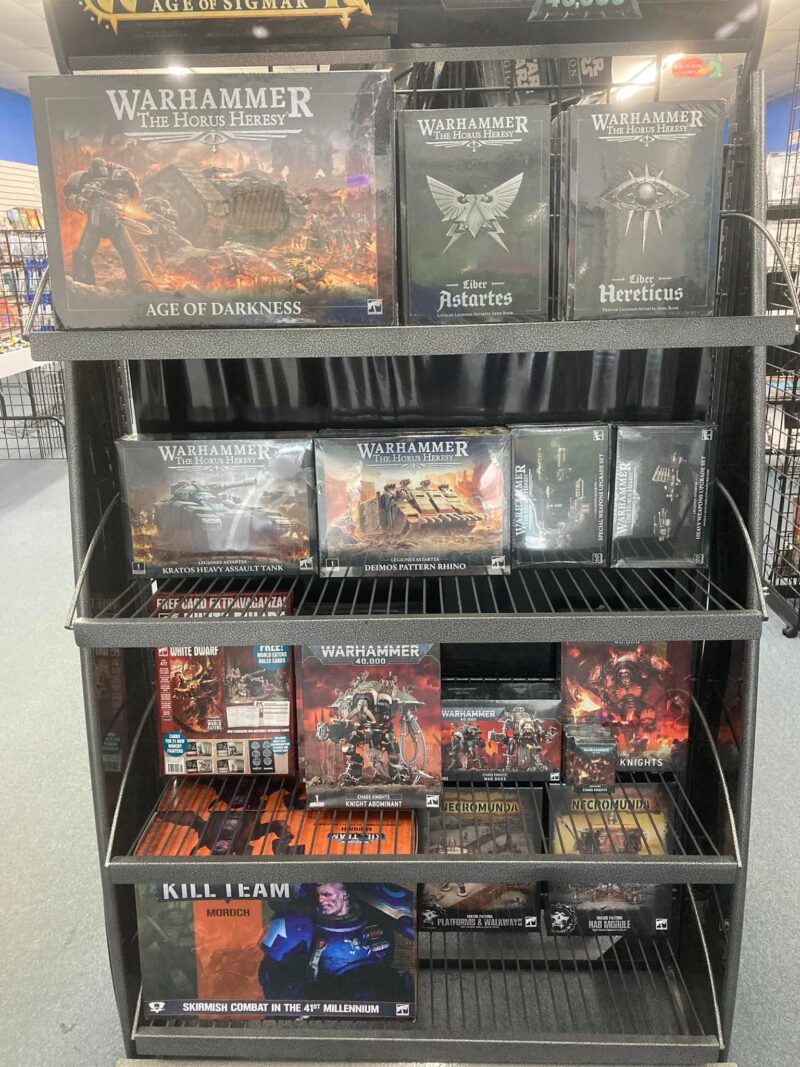In the last week, I’ve encountered 4 game stores who failed to optimize their inventory dollars.
I want to keep this article short, because the message is simple and I want every word to count.
In one example, the offending item was an overstock of a D&D book. Most books in the line right now are $50 retail–about $27.50 at distribution cost.
If the owner had put that $27.50 into, for example, Reaper Miniatures (I know it’s my go-to example for everything, but it could be whatever you can enthusiastically support, like plushes or fancy dice), and that product line turns 6 times/year, it could be earning $300/year instead of sitting on the shelf unsold.
This particular game store didn’t have one extra copy of a D&D book. It had at least 13. The owner is missing out on $3,900 in annual sales if instead of ordering a stack of books he had ordered 1 for the shelf.
That’s just one title. If you do that across 10 SKUs in the store, that’s $39,000 in potential sales you’re missing.
“If I run out, I’ll miss a sale.”
True. In fact, that’s my whole point. By doubling up in that one SKU, you’re missing hundreds of potential sales for other items.
In most cases, you’re only a couple of days away from a restock. Most of the country is within a one-day ship from a distributor. If you sell that low-turn D&D book, get another. It’ll be there tomorrow. Unless you’re selling 5-10 a week, you only need one in stock.
For reference, my go-to stock numbers for D&D are 5-4-3 (Players Handbook, Monster Manual, Dungeon Masters Guides). Everything else was one copy until sales frequency created stockouts, then they went 2 deep.
When first starting out, make sure you have representation for each of the biggest sellers. Once someone in the community expresses interest (“When are you going to start doing tournaments for x?”), expand your offering. If no one ever bites, it’s safe to drop it.
By big sellers, I specifically mean these
- Dungeons & Dragons
- Pathfinder
- Warhammer 40k
- Age of Sigmar
- X-Wing
- Star Wars Armada
- Star Wars Legion
- Pokemon
- Magic: the Gathering
- Yu-Gi-Oh!
- D&D Miniatures (not Frameworks)
- A small selection of card sleeves and boxes that you will expand over time
- Low-priced board & card games (Munchkin, Codenames, Gloom, Dungeon!, Guillotine, Happy Salmon, etc.)
- A representative sample of hobby supplies (knives, brushes, tape measures, etc.)
- Dice and battlemats
Once you have starting representation for each of these categories, expanding your offering by prioritizing turn rate. In other words, buy those things that you will sell most often. Those quick sales will provide you with the cash you need to keep adding merchandise.
When I bought Sun Coast and rebranded it as FLGS, it was doing less than $6,000 a month in total sales. When I left, company revenues had increased over 2,500%. My inventory management skills weren’t solely responsible for that growth, but they did drive it, especially during the critical early growth stages.
